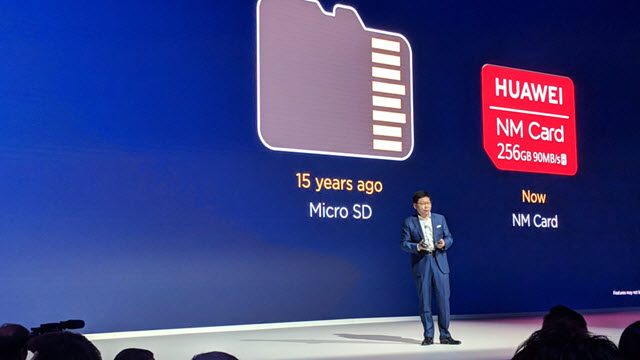Huawei NM cards replace microSD standard in its new range of mobile devices. Huawei, the Chinese mobile phone manufacturer, today announced the launch of its mobile devices Huawei Mate 20 and Mate 20 Pro, along with a surprising gamer smartphone with the largest OLED display to date, the Huawei Mate 20X. The official announcement confirms all leaks about Mate 20X.
In addition to all the arsenal of hardware that Huawei has built into these devices, combined with the smart camera, the company has decided to offer its own storage format and say goodbye to the microSD cards holding their NM cards. These are new nanocards that offer higher performance and capacity than microSDs.
This technology promises much more flexibility for the smart devices series introduced today, as users see only two SIM slots on the phone and do not need an additional slot for the microSD. The disadvantage of this introduction is that it is exclusive to Huawei, so no user can go to a third-party provider to choose a higher capacity NM card if they run out of storage options on the phone.
Huawei assures that the size of the NM cards resembles that of the Nano-SIM, which is currently used by smartphones. Its unique storage capacity is 256 GB and has a transfer rate of 90 MB/s. With the Mate 20 and Mate 20 Pro, the NM card is built into one of the two SIM slots of the phone, so the user has to choose between more memory for the phone or the option of using another SIM.
An interesting step for Huawei would be to make this technology available to other companies because the future of this technology would otherwise be at stake. Also, given the fact that dual SIM phones are becoming increasingly popular in Asian countries, it is not good to offer a phone that eliminates this possibility in exchange for more memory, especially if there are already microSDs that allow both.
